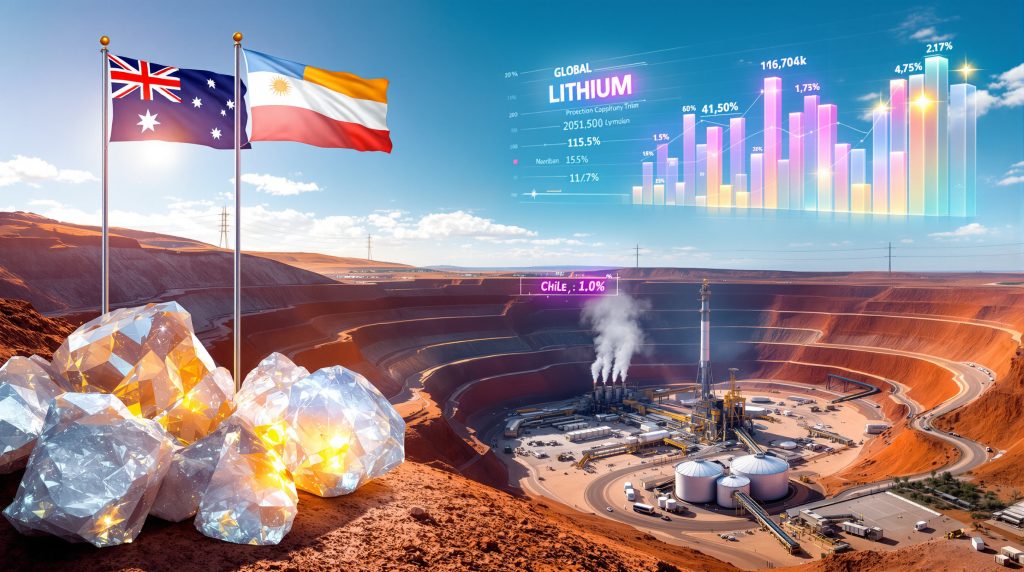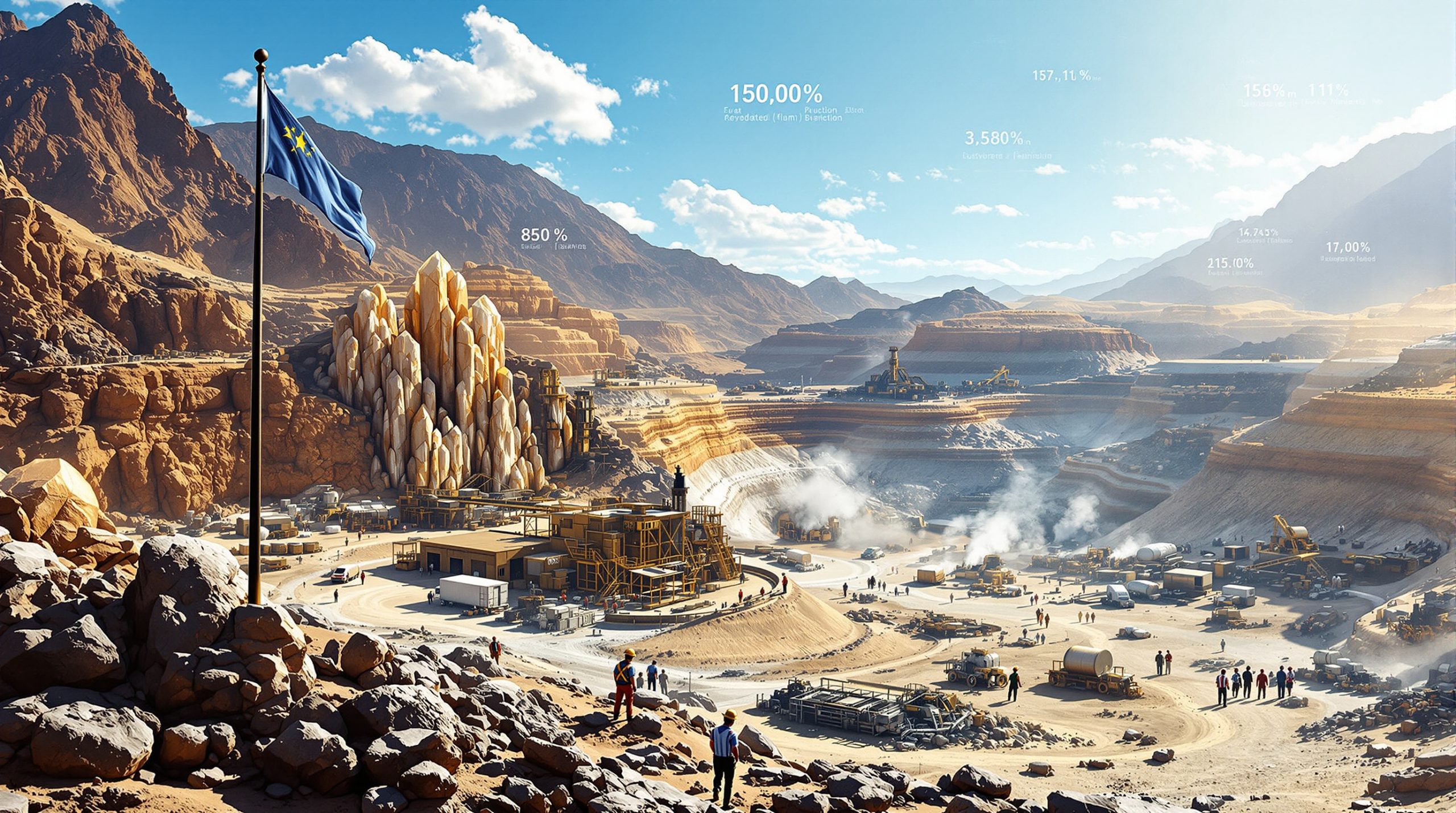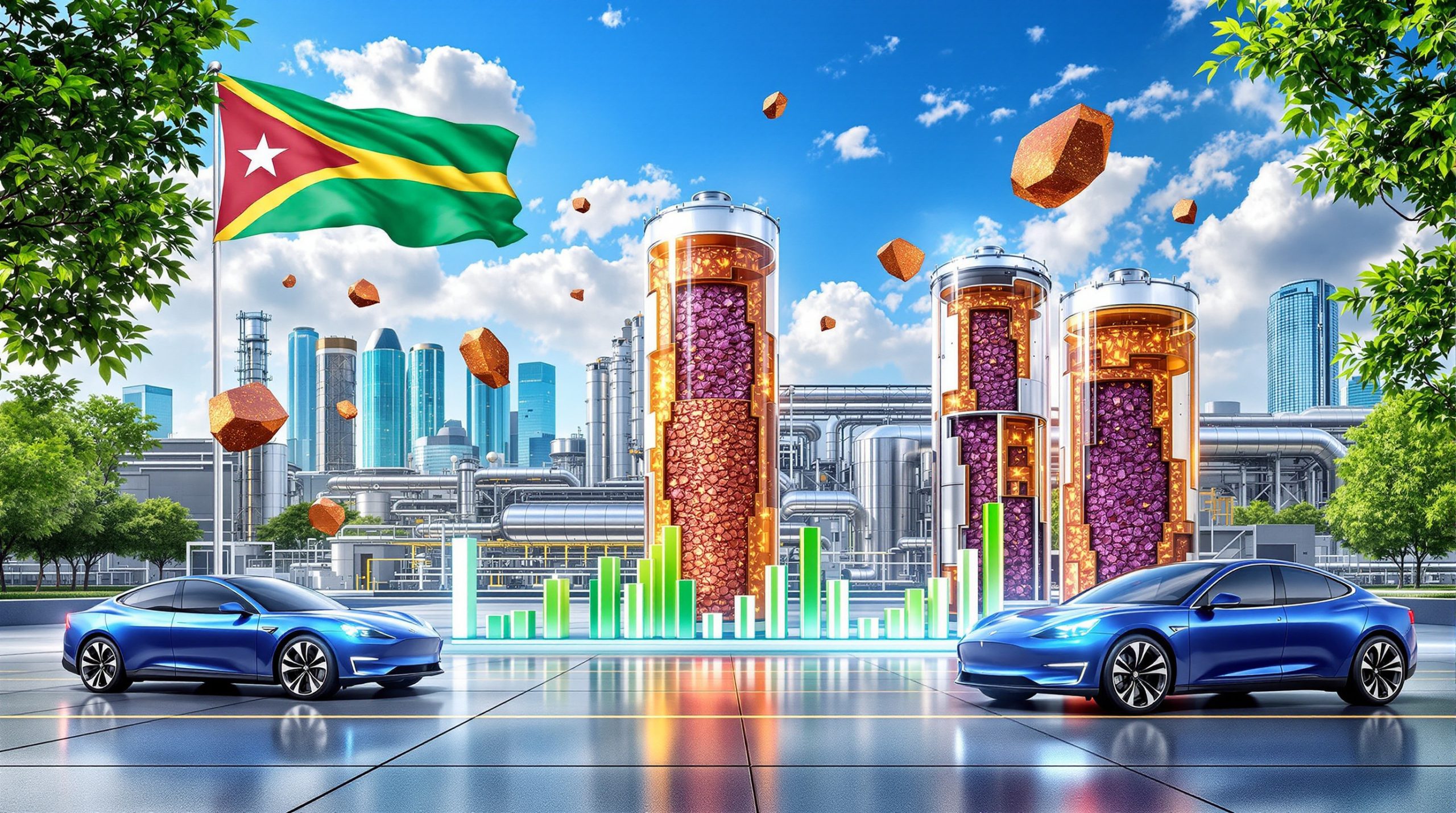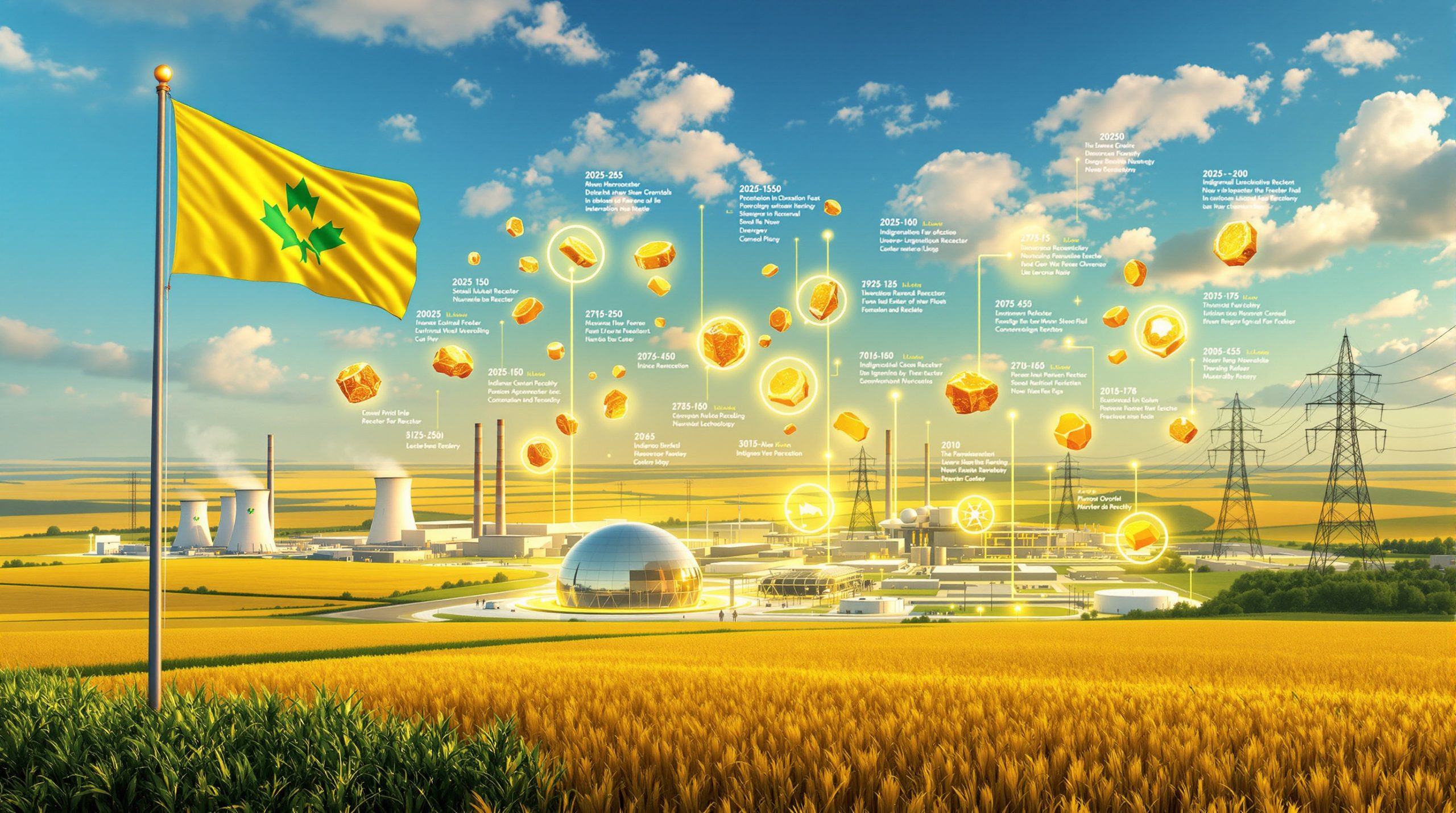What Makes a Lithium Mine "Top-Tier" in Today's Market?
The global lithium mining landscape has transformed dramatically as battery demand accelerates across multiple industries. Understanding what separates leading operations from smaller producers requires examining multiple performance dimensions beyond simple tonnage metrics, including the impact of lithium industry tax breaks on operational competitiveness.
Production Volume vs. Strategic Value Assessment
Modern lithium mining evaluation extends far beyond raw production numbers. Industry leaders combine substantial annual output with strategic positioning that influences global supply chains and pricing mechanisms.
| Ranking Criteria | Weight Factor | Key Metrics |
|---|---|---|
| Annual Production Capacity | 35% | Lithium carbonate equivalent (LCE) tonnes |
| Proven Reserves | 25% | Years of mining life remaining |
| Operational Efficiency | 20% | Cost per tonne, recovery rates |
| Strategic Location | 20% | Infrastructure access, political stability |
Top-tier operations typically produce over 20,000 tonnes LCE annually while maintaining production costs below $4,000 per tonne. However, strategic value often outweighs pure volume metrics. Mines with direct access to processing facilities, established supply agreements with battery manufacturers, and locations in politically stable jurisdictions command premium valuations regardless of absolute production scale.
Key performance indicators used in mine ranking methodology include:
- Resource grade quality and extraction complexity
- Integration with downstream battery supply chains
- Operational uptime and production consistency
- Environmental compliance and social license strength
- Capital efficiency in expansion projects
Global Supply Chain Impact Metrics
Individual mining operations wield disproportionate influence over worldwide lithium markets due to supply concentration patterns. The top 10 global operations control approximately 75% of total lithium production, creating significant price sensitivity to operational disruptions at major facilities.
Leading lithium operations serve as critical nodes in global battery supply chains, with production disruptions at single facilities capable of affecting worldwide pricing within weeks.
Integration capabilities with battery manufacturing hubs determine long-term strategic positioning. Furthermore, operations with established partnerships in China, South Korea, and emerging North American battery production centres maintain competitive advantages through secured offtake agreements and technical collaboration opportunities.
The Global Lithium Mining Landscape: Where Giants Emerge
Geographic Distribution Patterns
Lithium production concentrates in three primary regions, each utilising distinct extraction methodologies and facing unique operational challenges.
| Region | Production Share | Primary Method | Key Advantages |
|---|---|---|---|
| Australia | 52% | Hard rock spodumene | High-grade ore, established infrastructure |
| South America | 41% | Brine evaporation | Low production costs, massive reserves |
| North America | 5% | Mixed methods | Political stability, domestic markets |
| Other Regions | 2% | Various | Emerging opportunities |
Australia dominates global spodumene concentrate production through large-scale hard rock mining operations. The country's geological advantages include high-grade lithium pegmatites with ore grades frequently exceeding 1.2% Li2O, significantly above global averages.
South America's "lithium triangle" spanning Chile, Argentina, and Bolivia contains an estimated 58% of global lithium reserves. These brine operations benefit from exceptional evaporation conditions and lithium concentrations reaching 1,500 mg/L in premium locations.
Technology Divide: Brine vs. Hard Rock Operations
Production methodology fundamentally shapes operational scale, cost structures, and environmental considerations. Hard rock spodumene mining enables rapid production scaling but requires substantial energy inputs for mineral processing.
Hard rock operations typically achieve:
- Production ramp-up within 18-24 months
- Higher capital intensity ($400-600 million for major projects)
- Direct integration with lithium chemical processing
- Consistent quality specifications for battery-grade materials
Brine extraction operations demonstrate:
- Lower operating costs ($2,000-3,500 per tonne LCE)
- Extended development timelines (3-5 years to full production)
- Weather-dependent evaporation processes
- Environmental considerations regarding water usage
Moreover, lithium brine mining work requires specialised technical expertise and equipment configurations different from traditional hard rock operations.
Greenbushes Main Lithium Operation (Australia)
Global Production Leadership Position
The Greenbushes lithium mine represents the world's largest hard rock lithium operation, producing approximately 40,000 tonnes LCE annually through spodumene concentrate extraction. Talison Lithium's joint venture structure combines technical expertise with established market relationships across global battery supply chains.
| Production Metric | Greenbushes | Global Average |
|---|---|---|
| Annual LCE Output | 40,000+ tonnes | 15,000 tonnes |
| Ore Grade | 2.9% Li2O | 1.3% Li2O |
| Recovery Rate | 77% | 65% |
| Mine Life | 50+ years | 20 years |
The operation's technical superiority stems from exceptionally high-grade pegmatite deposits containing 2.9% lithium oxide, nearly double typical spodumene concentrations worldwide. This geological advantage translates directly into production cost leadership and operational efficiency metrics.
Integrated Value Chain Dominance
Greenbushes maintains strategic partnerships with Tianqi Lithium and Albemarle Corporation, creating integrated pathways from mine production through lithium chemical processing. These relationships provide operational stability through long-term supply agreements and technical collaboration in processing optimisation.
Recent capacity expansion projects totalling $516 million USD demonstrate continued investment in production scaling, targeting 55,000 tonnes LCE annually by 2026.
Long-term supply agreements with major battery manufacturers including CATL, BYD, and Tesla provide revenue predictability and market positioning strength. Contract structures typically include volume guarantees and pricing mechanisms linked to lithium carbonate benchmarks.
Future Growth Trajectory
Planned capacity increases focus on processing facility upgrades and mine expansion projects designed to extend operational life beyond 50 years. Technology innovation partnerships emphasise extraction efficiency improvements and environmental impact reduction initiatives.
Market position sustainability depends on maintaining cost leadership while scaling production to meet projected battery demand growth of 25% annually through 2030. Competitive advantages include resource grade superiority and established supply chain integration.
Thacker Pass Lithium Project Development (USA)
North America's Largest Lithium Resource
The Thacker Pass project in Nevada represents a strategic shift toward North American lithium production independence, containing proven reserves of approximately 13.7 million tonnes LCE across clay-hosted deposits. Lithium Americas Corporation's development timeline targets initial production by 2026 with full operational capacity reaching 40,000 tonnes LCE annually.
| Resource Category | Thacker Pass | Global Comparison |
|---|---|---|
| Proven Reserves | 13.7M tonnes LCE | Top 3 globally |
| Probable Reserves | 2.3M tonnes LCE | Extended mine life |
| Target Production | 40,000 tonnes LCE/year | Tier 1 operation |
| Mine Life | 40+ years | Above average |
Clay-based extraction methodology represents technological innovation in lithium processing, utilising sulfuric acid leaching followed by conventional precipitation techniques. This approach enables processing of lower-grade deposits while maintaining economic viability through scale advantages.
Strategic National Security Implications
The Trump administration's critical minerals independence objectives position Thacker Pass as essential infrastructure for domestic battery manufacturing capacity and reduced Chinese supply chain dependence.
Domestic supply chain development includes partnerships with General Motors and Ford Motor Company for battery manufacturing integration. The project aligns with federal initiatives targeting 50% domestic lithium production by 2030 to support electric vehicle manufacturing goals.
Strategic advantages include:
- Proximity to Nevada's battery manufacturing corridor
- Compliance with domestic content requirements for EV tax credits
- Integration opportunities with North American battery gigafactories
- Reduced supply chain vulnerability to geopolitical disruptions
Salar de Atacama Lithium Extraction (Chile)
World's Largest Brine Resource Base
Chile's Salar de Atacama contains the world's highest-grade lithium brine deposits, with concentrations reaching 1,500 mg/L lithium in optimal extraction zones. Combined operations by SQM and Albemarle Corporation produce approximately 44,000 tonnes LCE annually, representing nearly 25% of global supply.
| Operational Metric | Salar de Atacama | Industry Benchmark |
|---|---|---|
| Brine Grade | 1,500 mg/L Li | 400 mg/L Li |
| Production Cost | $3,200/tonne LCE | $4,500/tonne LCE |
| Evaporation Rate | 95% annually | 75% annually |
| Recovery Efficiency | 85% | 70% |
Processing efficiency advantages stem from exceptional climatic conditions including 350+ sunny days annually and precipitation rates below 15mm yearly. These factors optimise evaporation pond operations and reduce production timeline variability compared to other brine operations.
Geopolitical and Environmental Considerations
Chilean government policy changes implemented quota systems limiting annual production to 180,000 tonnes of lithium carbonate equivalent across all operators. Regulatory framework modifications reflect environmental protection priorities and indigenous community agreement requirements.
Water usage regulations impose strict monitoring requirements on brine extraction volumes to protect regional flamingo populations and maintain ecological balance in surrounding wetlands. Environmental compliance requires continuous monitoring and adaptive management strategies.
Key regulatory challenges:
- Production quota allocations between SQM and Albemarle
- Environmental impact assessments for expansion projects
- Indigenous community consultation and benefit-sharing agreements
- Water rights management and ecosystem protection requirements
Wodgina Lithium Mine Restart (Australia)
Production Capacity Restoration
The Wodgina lithium mine's operational restart by Mineral Resources Limited demonstrates market recovery dynamics and strategic positioning opportunities. Pre-suspension production capacity reached 25,000 tonnes spodumene concentrate annually with restart planning targeting 350,000 tonnes concentrate production by 2025.
| Operational Phase | Production Target | Investment Required |
|---|---|---|
| Phase 1 Restart | 75,000 tonnes/year | $180 million |
| Phase 2 Expansion | 175,000 tonnes/year | $290 million |
| Phase 3 Optimisation | 350,000 tonnes/year | $420 million |
Integration agreements with Albemarle Corporation provide processing pathway certainty and technical collaboration in spodumene concentrate upgrading. Partnership structures include technology sharing and market development initiatives targeting Asian battery manufacturers.
Strategic Market Re-entry
Spodumene concentrate quality specifications meet battery-grade requirements with lithium oxide content consistently exceeding 6.0% and low impurity levels suitable for direct chemical processing. Market positioning emphasises reliability and quality consistency for long-term supply agreement negotiations.
Capital investment in processing facility upgrades totalling $420 million demonstrates commitment to production scaling and market competitiveness restoration.
Long-term supply contract negotiations with battery manufacturers focus on 10-year agreements with volume guarantees and pricing mechanisms linked to lithium hydroxide market benchmarks. Strategic positioning targets North Asian markets through established shipping infrastructure.
Salar del Hombre Muerto Lithium Complex (Argentina)
Brine Quality Leadership Position
Argentina's Salar del Hombre Muerto operation produces the world's highest-grade lithium brine with concentrations reaching 620 mg/L lithium in extraction zones operated by FMC Corporation. Annual production capacity approximates 17,000 tonnes lithium carbonate with expansion potential targeting 25,000 tonnes annually.
| Quality Metric | Hombre Muerto | Regional Average |
|---|---|---|
| Li Concentration | 620 mg/L | 350 mg/L |
| Mg/Li Ratio | 1.4:1 | 6.8:1 |
| Production Cost | $3,800/tonne | $4,200/tonne |
| Processing Time | 12 months | 18 months |
The operation's technical advantages include exceptionally low magnesium-to-lithium ratios of 1.4:1, significantly reducing processing complexity and chemical consumption compared to other brine operations. This chemistry optimisation translates directly into cost advantages and production efficiency gains.
Technological Innovation Hub
Advanced brine processing techniques achieve recovery rates exceeding 90% through proprietary purification methods and crystallisation optimisation. Research and development partnerships with battery manufacturers focus on high-purity lithium carbonate production for specialised battery applications.
Innovation focus areas:
- Direct lithium extraction pilot programmes
- Selective membrane technology development
- Waste heat recovery systems integration
- Automated process control optimisation
Expansion potential includes resource development across 33,800 hectares of brine-bearing deposits with geological assessments indicating additional 15 years of production capacity at expanded output levels.
Pilbara Minerals Pilgangoora Operation (Australia)
Integrated Mining and Processing Capabilities
The Pilgangoora lithium-tantalum operation produces approximately 330,000 tonnes spodumene concentrate annually with expansion projects targeting 680,000 tonnes by 2025. Pilbara Minerals maintains integrated capabilities spanning mining, processing, and direct shipping coordination to Asian markets.
| Production Milestone | Timeline | Capacity Target |
|---|---|---|
| Initial Production | 2018 | 300,000 tonnes/year |
| P680 Expansion | 2024 | 680,000 tonnes/year |
| P1000 Development | 2026 | 1,000,000 tonnes/year |
Downstream processing partnerships include joint venture negotiations with POSCO Holdings for integrated lithium chemical production facilities. Value-add strategies focus on spodumene concentrate upgrading and direct lithium hydroxide production capabilities.
Market Integration Strategy
Direct shipping ore sales target Chinese processing facilities with established relationships including Jiangxi Ganfeng Lithium and Sichuan Yahua Industrial Group. Market positioning emphasises consistent quality specifications and reliable delivery scheduling through dedicated port infrastructure.
Recent production records achieved 95,000 tonnes spodumene concentrate in Q3 2024, demonstrating operational efficiency improvements and capacity utilisation optimisation.
Joint venture negotiations for local processing facilities aim to capture downstream value while maintaining supply chain flexibility. Strategic positioning includes technology partnerships and market development initiatives across multiple battery manufacturing regions.
Cauchari-Olaroz Integrated Lithium Facility (Argentina)
Brine Resource Scale and Quality
The Cauchari-Olaroz lithium brine project contains proven reserves of 5.3 million tonnes LCE with average brine concentrations of 544 mg/L lithium across extensive evaporation pond systems. Lithium Americas Corporation development timeline targets production capacity of 40,000 tonnes LCE annually through integrated processing facilities.
| Resource Category | Quantity | Quality Metrics |
|---|---|---|
| Proven Reserves | 5.3M tonnes LCE | 544 mg/L Li |
| Probable Reserves | 13.5M tonnes LCE | High-confidence geology |
| Target Production | 40,000 tonnes/year | Battery-grade specification |
| Mine Life | 40+ years | Sustainable extraction rates |
Comparison with neighbouring Salar de Atacama operations indicates competitive brine quality and processing potential while benefiting from lower regulatory complexity and operational flexibility advantages within Argentine jurisdiction.
Processing Technology Implementation
Direct lithium extraction pilot programmes demonstrate potential for accelerated production timelines and reduced environmental footprint compared to conventional evaporation pond systems. Additionally, geothermal lithium extraction technologies offer innovative approaches for resource development. Scalability assessments indicate capacity for 60,000 tonnes LCE annually through technology optimisation.
Environmental impact mitigation strategies include:
- Solar power integration for processing operations
- Brine reinjection systems for aquifer management
- Wildlife habitat protection and monitoring programmes
- Community engagement and benefit-sharing initiatives
Mount Marion Lithium Project (Australia)
Hard Rock Processing Innovation
The Mount Marion spodumene operation produces approximately 200,000 tonnes concentrate annually through joint venture partnership between Neometals Limited and Jiangxi Ganfeng Lithium. Processing innovation focuses on concentrate grade optimisation and impurity reduction for battery-grade applications.
| Production Phase | Capacity | Grade Specifications |
|---|---|---|
| Phase 1 Operations | 400,000 tonnes ore | 6.0% Li2O concentrate |
| Phase 2 Expansion | 900,000 tonnes ore | Battery-grade purity |
| Processing Optimisation | 200,000 tonnes concentrate | <0.1% iron content |
Spodumene concentrate quality specifications consistently achieve 6.0% lithium oxide content with iron impurities below 0.1%, meeting stringent requirements for lithium hydroxide production in battery manufacturing applications.
Supply Agreement Network
Long-term offtake contracts with Asian battery manufacturers include volume commitments totalling 80% of production capacity through 2028. Price hedging strategies utilise lithium carbonate benchmark linkages with quarterly adjustment mechanisms.
Recent expansion announcements targeting 400,000 tonnes annual concentrate production demonstrate confidence in sustained market demand and operational scalability.
Strategic positioning emphasises consistent delivery scheduling and quality reliability for established customer relationships across Chinese, Japanese, and South Korean battery supply chains.
Salar de Olaroz Lithium Brine Operation (Argentina)
Brine Concentration and Processing Scale
The Salar de Olaroz operation produces approximately 17,500 tonnes lithium carbonate annually through Orocobre Limited (now Allkem Limited) processing facilities utilising conventional evaporation pond systems across 69,000 hectares of brine-bearing deposits.
| Operational Metric | Olaroz Performance | Regional Benchmark |
|---|---|---|
| Brine Grade | 866 mg/L Li | 450 mg/L Li |
| Mg/Li Ratio | 2.8:1 | 5.2:1 |
| Annual Production | 17,500 tonnes LCE | 15,000 tonnes LCE |
| Processing Efficiency | 78% recovery | 72% recovery |
Evaporation pond system efficiency benefits from optimal climatic conditions including high solar radiation and low precipitation rates enabling consistent processing timelines and predictable production scheduling throughout annual cycles.
Regional Infrastructure Advantages
Transportation logistics leverage established road networks connecting production facilities to Port of Antofagasta in Chile, reducing shipping costs and delivery timelines to Asian markets. Government policy support includes tax incentives and streamlined permitting processes for lithium development projects.
Infrastructure benefits include:
- Direct highway access to Pacific shipping ports
- Established electrical grid connectivity
- Skilled workforce availability in regional mining centres
- Regulatory framework supporting foreign investment
Annual production capacity demonstrates potential for expansion to 42,500 tonnes LCE through additional evaporation pond construction and processing facility upgrades targeting market demand growth projections.
Greenbushes Lithium Mine Extension Projects (Australia)
Production Capacity and Reserve Assessment
Extension project development at Greenbushes targets production capacity increases to 55,000 tonnes LCE annually by 2026 through Tailings Retreatment Plant construction and CGP3 expansion initiatives. Talison Lithium operational metrics demonstrate consistent performance across multiple production phases.
Current annual production reaches 1.35 million tonnes spodumene concentrate with lithium oxide content averaging 5.8% suitable for direct chemical processing applications. Integration with downstream processing facilities in China provides vertical supply chain coordination and market positioning advantages.
Strategic Market Position
Partnership dynamics with major battery manufacturers include long-term supply agreements with Tesla, Panasonic, and Contemporary Amperex Technology (CATL) providing revenue stability and production planning certainty through volume commitments and pricing mechanisms.
Expansion project timelines indicate capacity increases totalling 185% above current production levels, positioning Greenbushes as the dominant global spodumene supplier through 2030.
Strategic positioning leverages resource quality advantages and operational scale benefits to maintain market leadership amid increasing global competition from emerging lithium operations across multiple continents.
How These Mining Giants Shape Global Battery Supply Chains
Production Concentration Risks and Opportunities
Geographic concentration patterns create both supply security risks and investment opportunities across global battery manufacturing networks. The top 10 lithium operations collectively control approximately 68% of worldwide production capacity, generating significant price sensitivity to operational disruptions at individual facilities.
| Production Concentration | Global Share | Supply Chain Risk |
|---|---|---|
| Top 3 Operations | 42% | High vulnerability |
| Top 5 Operations | 58% | Moderate risk |
| Top 10 Operations | 68% | Distributed risk |
| Emerging Operations | 32% | Growth potential |
Dependency analysis reveals critical supply chain vulnerabilities in Australian spodumene operations and South American brine facilities. Production disruptions at major facilities historically generate 15-25% price volatility within 30-day periods, demonstrating market sensitivity to supply concentration patterns.
Combined production capacity of top-tier operations totals approximately 340,000 tonnes LCE annually, representing nearly 70% of current global lithium supply for battery applications.
Investment Flow Patterns and Market Dynamics
Capital allocation trends demonstrate concentrated investment flows toward capacity expansion projects at established operations rather than greenfield development initiatives. Recent merger and acquisition activity totalling $12.8 billion across lithium mining assets reflects strategic positioning for supply chain control.
Major recent transactions include:
- Albemarle-Liontown Resources acquisition discussions
- Ganfeng Lithium partnership expansion in Argentina
- Ford Motor Company upstream investment initiatives
- Chinese state-owned enterprise acquisition activities
Price volatility impacts operational profitability with lithium carbonate pricing ranging from $13,000-78,000 per tonne over 24-month cycles. However, lithium market supply imbalance conditions create uncertainty for expansion decision timing which reflects market price expectations and long-term demand growth projections across electric vehicle adoption scenarios.
Future Outlook: What's Next for Lithium Mining Leadership?
Emerging Operations and Competitive Threats
Development-stage projects demonstrate potential to reshape global production rankings through technological innovation and resource scale advantages. Direct lithium extraction methods enable processing of previously uneconomic brine deposits while reducing environmental impact and development timelines.
| Development Project | Target Production | Expected Timeline |
|---|---|---|
| Rhyolite Ridge (USA) | 20,000 tonnes LCE/year | 2027 |
| Manono (DRC) | 25,000 tonnes LCE/year | 2026 |
| Sal de Vida (Argentina) | 17,500 tonnes LCE/year | 2025 |
| Lake Resources (Argentina) | 25,500 tonnes LCE/year | 2027 |
Technology disruption potential from direct lithium extraction methods could reduce brine processing timelines by 75% while improving recovery rates and environmental performance. Geographic diversification trends indicate emerging production capacity in Africa, Europe, and North America reducing current dependence on Australian and South American operations.
Sustainability and ESG Considerations
Environmental compliance requirements increasingly shape operational practices and expansion project approval processes. Water usage efficiency improvements and community engagement initiatives represent operational priorities for maintaining social licence across major lithium producing regions.
Water usage efficiency initiatives target 40% consumption reduction through recycling systems integration and process optimisation, addressing environmental concerns in water-scarce brine extraction regions.
Carbon footprint reduction strategies include:
- Renewable energy integration at processing facilities
- Electric vehicle adoption in mining fleet operations
- Methane capture and utilisation programmes
- Supply chain transportation optimisation
Community engagement initiatives focus on:
- Indigenous rights recognition and benefit-sharing
- Local employment and skills development programmes
- Environmental monitoring and transparency reporting
- Regional economic development contributions
Market leadership sustainability requires balancing production scaling with environmental stewardship and community relations management. Operational excellence increasingly incorporates ESG performance metrics alongside traditional financial and production indicators, reflecting evolving stakeholder expectations and regulatory requirements in key producing jurisdictions.
What About Cleveland-Cliffs Exploring Rare Earth Potential at US Mine Sites?
Interestingly, whilst lithium dominates battery mineral discussions, other critical minerals are gaining strategic importance. Cleveland Cliffs has recently announced exploration initiatives for rare earth elements at existing mining sites, representing diversification beyond traditional iron ore operations.
The company's stock has surged following announcements of potential rare earth mining capabilities at US locations. This strategic pivot demonstrates how established mining companies are adapting to critical mineral supply chain requirements.
Similarly, nations are developing strategies for securing lithium supply chains to reduce dependency on concentrated production regions. These developments highlight the interconnected nature of critical mineral supply chains and the strategic importance of domestic resource development initiatives.
Further Exploration:
Readers interested in exploring related critical minerals developments can examine recent coverage of rare earth element exploration initiatives at established mining sites, demonstrating industry diversification strategies beyond traditional lithium production focus areas.
Looking to Position Yourself in the Next Major Lithium Discovery?
Discovery Alert's proprietary Discovery IQ model delivers real-time alerts on significant lithium and mineral discoveries across the ASX, enabling subscribers to identify actionable opportunities ahead of the broader market. Understand why major mineral discoveries can lead to substantial returns by exploring Discovery Alert's dedicated discoveries page, showcasing historic examples of exceptional outcomes, and begin your 30-day free trial today to secure your market-leading advantage.




